(Traipsing around in a foreign land can mean that it’s a struggle to pinpoint any one species as My Bird of the Day. All the more so in Uganda which has the greatest diversity of bird species anywhere in the world; over 1000 species. So for the next few postings while I share some of my excitement, l’ll skip highlighting any one bird.)
January 27 2017. Semliki National Park, Uganda. Today was a day spent in lowland tropical jungle, there’s no better way of describing it. We were on a birding tour in Semliki National Park led by Justus, a guide provided by Uganda Wildlife Authority. The park lies along the river-defined border between Uganda and the Democratic Republic of Congo. The DRC is a difficult country, the Canadian Government strongly advises against travel there; or even close to it and we were very close. All sorts of political trouble, international intrigue and violence lurks in the DRC but we experienced no difficulties. Many weeks later some colleagues visited the DRC and said they could sense the barely suppressed chaos, people lived in near anarchy and there was scant regard for the country’s wildlife (or human life).
We started at seven while it was reasonably cool and before the sun peered over the mountains to the east. We spent an hour watching birds along the roadside including: Pygmy Kingfishers, Western Bronze-necked Pigeons and Great Blue Turacos and then suddenly there were hornbills. Astonishing birds, large almost lumbering in flight over the road to make their way to and from the forest: Black and White Casqued Hornbill, Piping Hornbill, African Pied Hornbill, Black Dwarf Hornbill and Black-Casqued Wattled Hornbill. I found myself wondering how such improbable looking creatures could have survived evolution’s pitfalls and blind alleys. But drawing on the cautionary advice to never assume that evolution has stopped, I’m left speculating on whether hornbill species have either been remarkably successful and thrived over the 40 million years of avian evolution so far, or, conversely, done really badly and the twenty or so hornbill species known today are all that’s left of a prehistoric throng; needs research.
As the sun got up we followed deep shade paths into the forest. Our guide of course knew what to expect and where to find it and showed us some astonishing birds. While everything was new to me, more or less, many fell into familiar families such as doves, falcons, eagles, finches and cuckoos. At the forest edge was this Lizard Buzzard, dressed in the soft striped greys of an old-fashioned morning suit although defying convention by sporting bright yellow socks.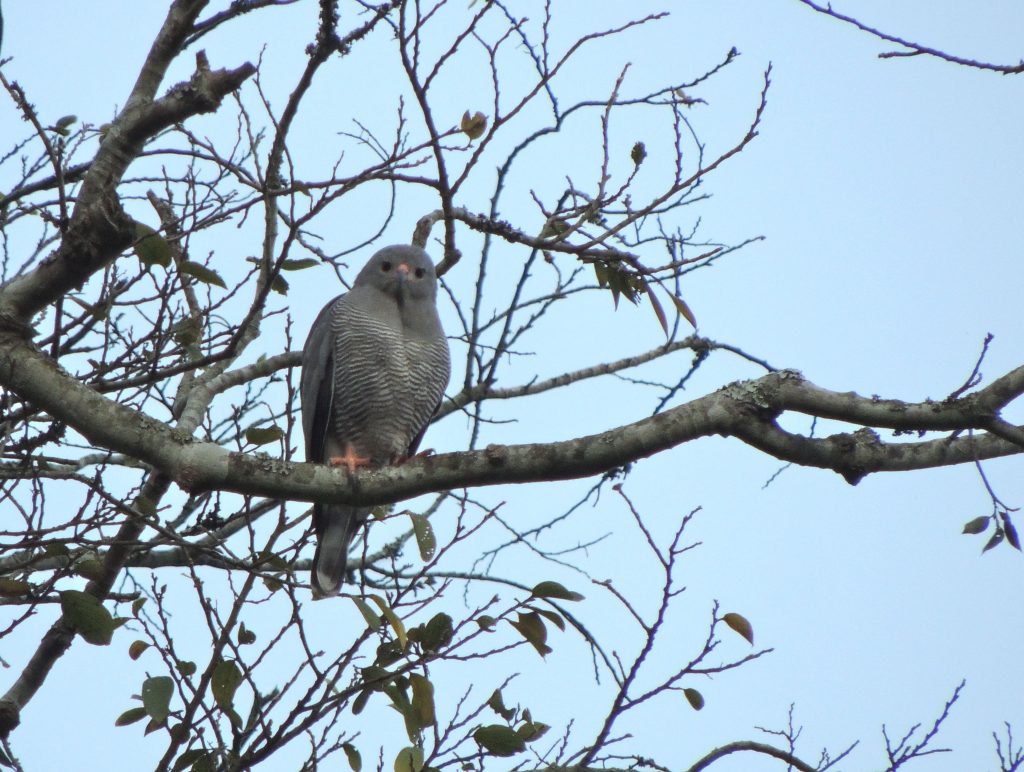
Cuckoos are always interesting, I spotted an African Cuckoo which looks very much like the common European version and our guide pointed out both Red-chested and Yellow-throated Cuckoos, the latter really excited him. I have to say that we took him at his word because for us it, indeed most forest canopy birds, was very hard to make out.
Later as we struggled our way along the edge of a small rivulet, Justus told me that there were ducks in this river. In the abstract that seems unsurprising but if you could have been there and seen what was really a wide trickle seeping through the undergrowth, it might have set you wondering what kind of duck could possibly make a go of it it here. Well, it’s Hartlaub’s Duck and we didn’t see any, but when I checked my field guide I really wish we had because it’s a handsome rarity. My book says, “…a striking, rather large dark chestnut duck with a blackish head, pale blue shoulders …..uncommon on well-vegetated and secluded forest pools and rivers in Semliki Forest …”
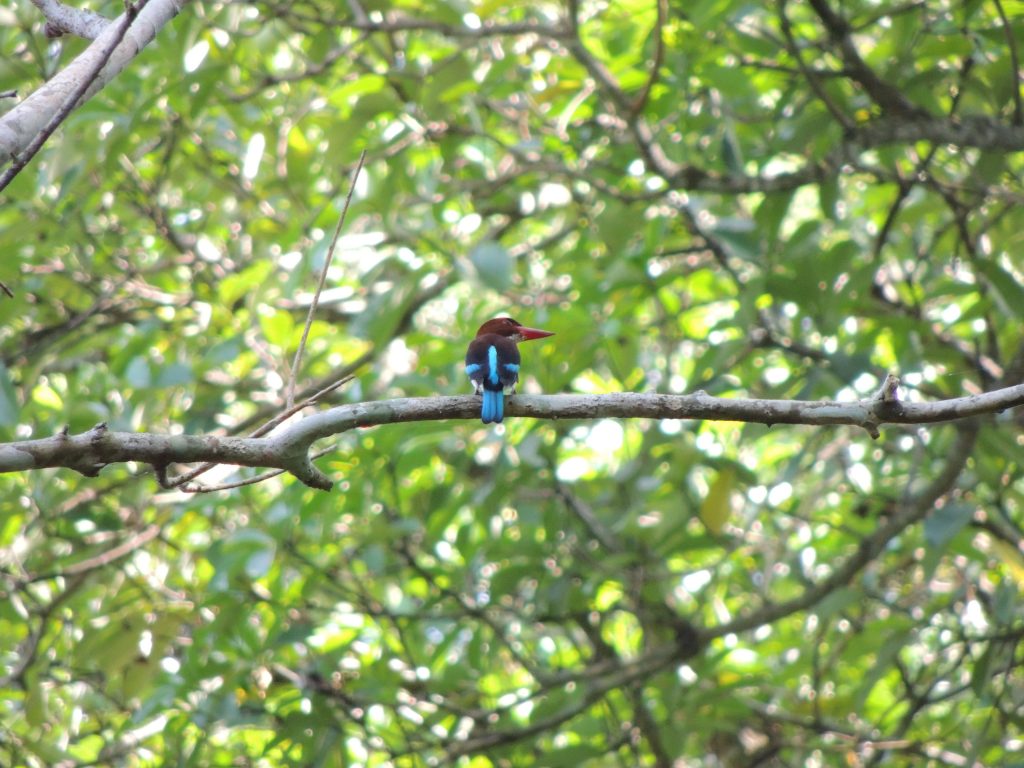
Perhaps most breathtaking to me, was this Chocolate-backed Kingfisher. It obligingly perched just ahead of us in a well-lit open spot. Not all kingfisher species depend on fish for a living, the Chocolate-backed is a forest species, probably living on various insects and other invertebrates – and perhaps some manageable vertebrates like the slender, bright green snake that slid our way and sent my driver/companion Robert leaping out of its way. Snakes in tropical forests?! I took the hint and gave it a wide berth too.
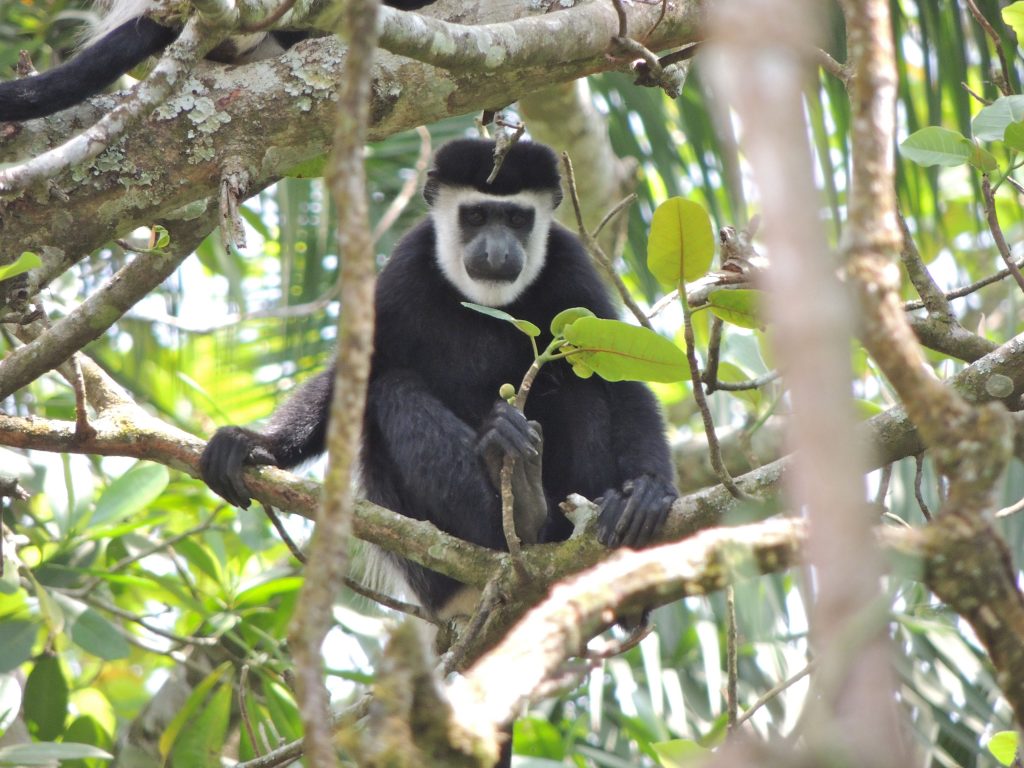
Tucked away in Semliki Forest are a couple of hot-springs which Robert felt were worth the additional entry fee (on my part) to go and see. I’ve visited the spectacular and explosive geysers of Iceland and, with them in mind (notwithstanding the obvious contrasts between Iceland and Uganda) we hiked the short distance to the closest spring; I wished I hadn’t used Iceland as the benchmark. The spring was a metre-high fountain of piping-hot water, which, rather than spasmodically erupting, instead fountained a steady issue of scalding water from an ever-growing mineral column and across a wide apron of steaming salt whiteness. It was all rather curious and other-worldly although the squishy margins attracted a couple of interesting shorebirds, a Wood Sandpiper, a bird that winters in Africa and breeds in northern Eurasia, and a Spur-winged Lapwing.
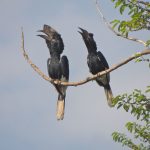
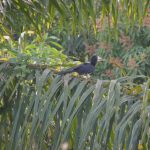
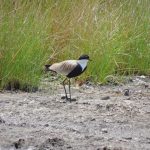
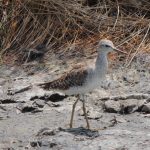
Good golly! How dangerous and incredible! Happy trails!